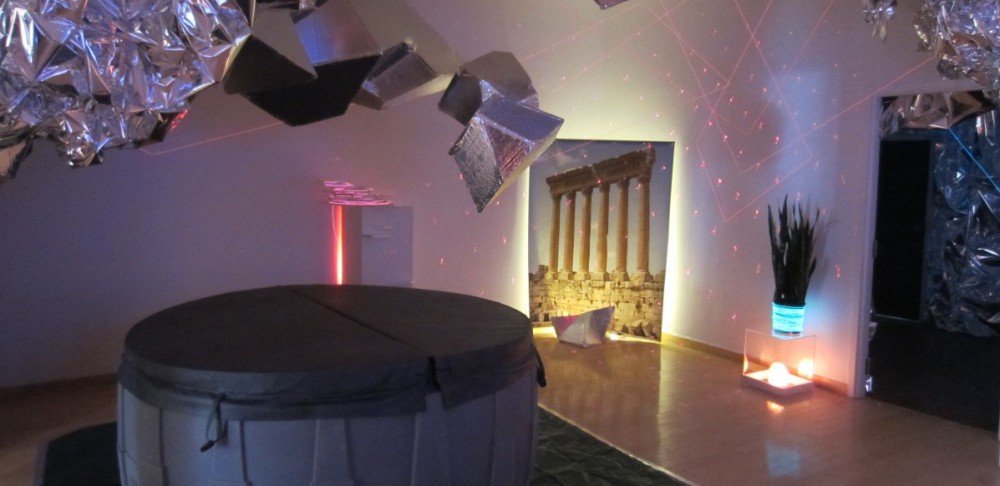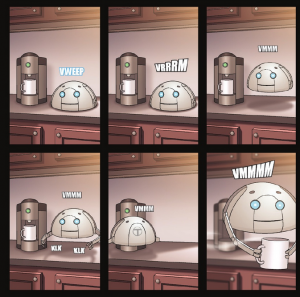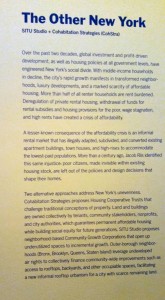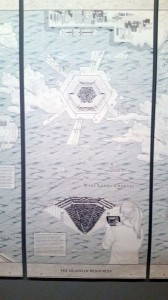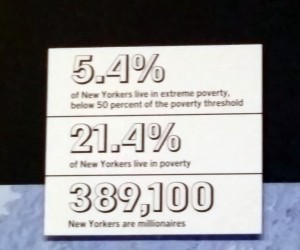Visually Stunning
Differences:
No Iris
Andy’s are now called Replicants. They are declared illegal on earth after an uprising.
Bounty Hunters are called Blade Runner Units.
Replicants are nicknamed Skinjobs.
There is no mention of Mercerism, Empathy boxes, or mood organs.
Takes Place in LA November 2019
The movie opening really shows how messed up the world is.
Instead of an opening scene with Iris, the opening shows the interview Holden conducts with Leon. Right away, there is a focus on the eyes!
While there is no mention of Buster Friendly, there is dialog being played on the blimps and tv’s that are exact quotes from his dialog in the book.
The world is a melting pot, and very packed. There is a major Japanese and German influence. In the book, World War Terminus. Maybe the Axis powers won in this world?
There are advertisements everywhere.
Rick seems more confident compared to the book.
Timestamps
3:48 Movie opens with an extreme close up of an eye.
6:15 Mention of a tortoise
8:25 “Buster” says “Start over in a golden land of opportunity” This was what was told the chinese rail workers in the early 19th century, who emigrated to the US. These Chinese workers were basically slaves, just like the Replicants.
12:20 Rick is retired, and he is better than Holden.
14:30 They are military Androids
15:10 They have 4 year life spans, so that they don’t gain true sentience.
17:20 Meets Rachel, Pretty obvious that she is a robot. The actress performs like a robot.
24:25 Rick has a handler, Gaff. He is a new character. Makes Origami, that show Ricks moods and thoughts.
25:15 Roy is breaking down.
28:30 Morphology and longevity are mentioned. Chew deals with eyes. Cold environment, symbolizes that the androids are cold inside.
28:55 “Chew, if only you could see what i’ve seen with your eyes.”
J.F. Sebastian is the onscreen version of John Isidore.
32:00 Deckard is single. Rachel doesn’t know she’s a replicant. False memories, she is a copy of Tyrells niece.
33:00 Spider brought up again
During this whole interaction, Roy has more empathy towards the Replicants than in the book.
35:20 Rick looks at pictures that are Leons.
38:00 Priss meets JR. Feigns being weak and scared. Like a chameleon. Dark Makeup, to hide her eyes?
40:30 JR is a designer, not some random grunt like character.
42:00 First appearance of the Unicorn in Ricks Dream.
46:20 Animals are not as important as in the book.
47:30 Man is holding a bird cruelly.
Animal Market… Artificial Snake
51:49 Miss Salome and snake, snake that corrupted man? Dances with replicants.
56->58 Chase scene. Salome dies surrounded by Mannequins. With her own kind?
1 hour mark. Rick is drinking… again. Seems to be how he deals with it. Every instance of him meeting with a Replicant results in him drinking.
1:02:00 Leon wants to know how much longer
1:06:00 Rick empathetic to Rachel. her eyes glow now.
1:07:20 Rachel asks Rick if he’s ever taken the test. Alludes to him being a Replicant.
1:11:00 Rick is very forceful with Rachel. Borderline Rape.
1:13:00 Pris is painting her eyes, then the clock makes coocoo sound.
1:17:20 Sebastian knows they’re replicants. Unlike Isidore
1:19:00 Replicants talking to JR. As he starts to show fear, the water starts to boil. Nice camera angle. JR’s dna was used in their creation.
1:26:00 Roy meets and kills his maker. Pushes his finger through Tyrells Eyes!
1:32:20 Pris is hiding among mannequins. She also dies among her “sisters.”
1:35:00 Roy is sad over Pris’s death.
The hunter has now become the hunted.
1:41:50 “that was irrational of you.” Roy hints that deckard is acting human?
1:46:25 “I’ve seen things you people wouldn’t believe.”
1:47:21 Roy dies. It is interesting that of all the replicants, he died “naturally” yet was the most vicious. In the end, he realized what it was to be human? Dove flies away.
1:48:20 Gaff “You’ve done a MANS job, sir.” then tosses Deckard a gun.
1:51:50 Last scene, There is a Unicorn Origami left by Gaff. Is this a way of Gaff telling him that he knows what he dreams?
Themes:
Eyes – Everyone is being watched. The blimp illuminates everything. Gaff is always watching Rick. Roy goes to chew, a EYE DESIGNER to help learn of his origin. Chew shows them the way to Tyrell. Roy tells Chew, if only he could see what he’s seen.
Unicorn- Mythical beast that could only be tamed by a maiden. Rick = Unicorn, Rachel = Maiden? Whenever Rick seems to be questioning himself, Gaff shows up. Last scene, Gaff leaves the origami unicorn. He knows Ricks memories.
Women are sexual objects. Pris was a sex robot. Rick is a drunk, and an asshole.
